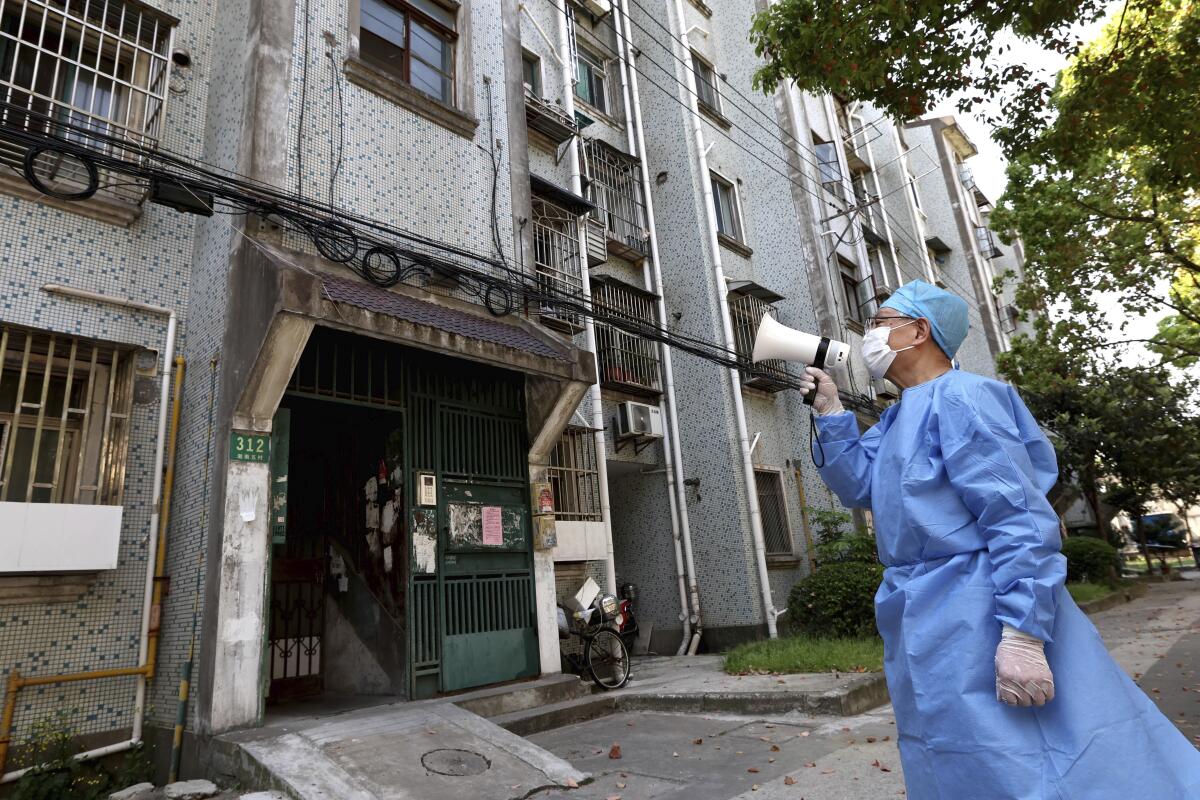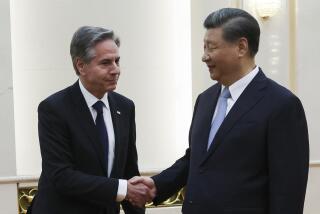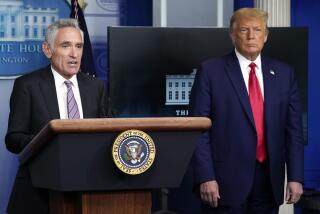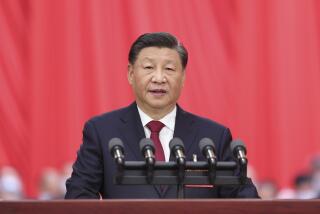Op-Ed: The catastrophic success of China’s zero-COVID policy

- Share via
For two years, it seemed as though China’s ruthless COVID-19 policy had paid off. After stumbling in its initial efforts to stem the pandemic, China’s rulers fixed a simple numeric target — zero COVID cases — and made sure everyone knew they had to reach it. The results looked severe to Western eyes, but they stopped the virus’ spread. They also gave China a propaganda victory, emboldening their claims that authoritarian governments could solve social problems better than liberal democracies, which in worrying too much about people’s civil rights, ended up killing them instead.
Now, the costs of the China’s rigidity are becoming apparent. New variants are much harder to control; more than half of China’s largest cities have seen lockdowns. Weeks after its lockdown began, some in Shanghai remain trapped in their apartments indefinitely, with many growing increasingly angry and hungry. A slew of figures shows a cratering economy in April. China’s refusal to change course demonstrates the weaknesses, not the strengths, of China’s system. Once its leaders have settled on a number like zero, it’s very hard for them to change.
Many Western observers rely on simplistic models of how China works. They imagine the Chinese government as a monolith, where leaders issue edicts that are flawlessly carried out by local agents. The reality is much messier. The Chinese state is a bewildering patchwork of bureaucratic fiefdoms, each run by petty tyrants trying to retain the favor of the party leadership, while pursuing their own self-interest.
China’s leaders have managed their fractious underlings by giving them clear numeric targets. Central leaders set GDP growth targets for provincial officials, who then do the same for city leaders in their region, and so on with counties down the line. Promotions followed from strong performance on these metrics, demotions from failure.
For decades this limited quantified vision worked to produce strong GDP performance. But over time problems accumulated. The predictable result, as my research demonstrates, was that lower officials juked the stats. Some simply faked the numbers, and others used policies, such as boosting construction, that increased short-run GDP at the cost of mounting debts to fund vacant airports, little-used highways and empty buildings on the edge of shrinking cities. Such efforts to hit their targets happened because these officials had more reason to care about their superiors than the people their policies affected.
Fifteen years ago, China’s then-premier Wen Jiabao laid out his concerns about what this system produced, calling China’s economy “unstable, unbalanced, uncoordinated, and unsustainable.” But even with all of the political changes that Xi Jinping has wrought, moving away from GDP targeting has proved elusive.
Now, we are seeing the same dynamic unfold with the zero-COVID policy.
The policy’s key strength was its clear numeric target, which China’s leaders used to measure their subordinates’ performance. But this success has proved increasingly catastrophic. It has led officials to produce questionable numbers (the official death rate is … remarkably low), to separate parents from their children, to withhold medical care from those with other ailments, and to confine citizens — with a food system near the breaking point — to try to achieve an increasingly impossible goal.
China’s regime is trapped by its previous success. It has centered much of its propaganda on the superiority of zero-COVID and the Chinese system of rule. Altering the policy might be taken as an implicit admission that the Chinese model is not so successful after all. Hence the current situation, where China’s local and national leaders probably realize that continuing the zero-COVID policy is a mistake, but no one feels secure enough to take the risk of fixing it.
One key lesson is that complex authoritarian systems such as China are less nimble than they seem at first sight. Numeric targets allow the central leadership to influence their underlings — but at the expense of giving them tunnel vision and the incentive to fudge the figures when they can. And sometimes, when the targets do succeed for a while, they become traps, tempting the regime to identify too closely with a measure that then leads it to adopt increasingly irrational policies even when reality demands change.
It’s hard for China’s leaders to relax the zero-COVID policy, even if they can see its destructive consequences.
Jeremy L. Wallace, an associate professor of government at Cornell University, is the author of the forthcoming “Seeking Truth and Hiding Facts: Information, Ideology, and Authoritarianism in China”
More to Read
A cure for the common opinion
Get thought-provoking perspectives with our weekly newsletter.
You may occasionally receive promotional content from the Los Angeles Times.










